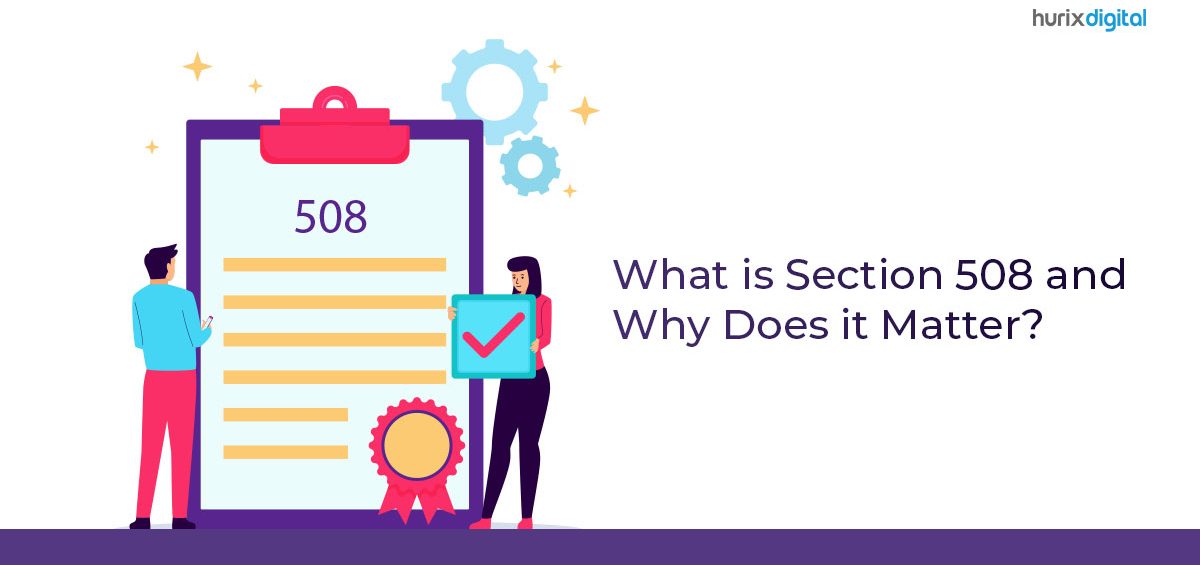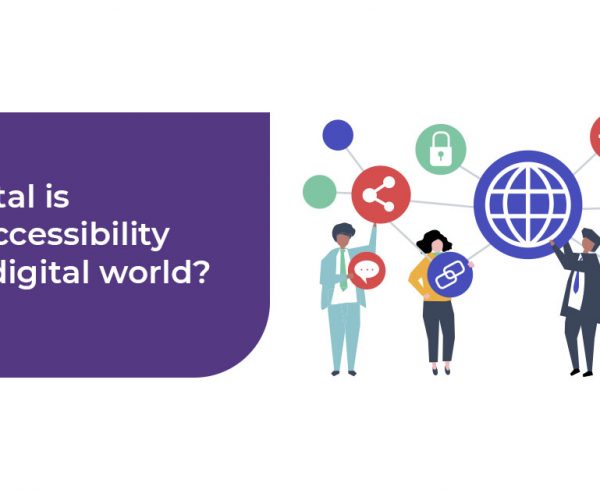In recent years, there has been an important shift from focusing on the limitations of disability to solutions for lack of accessibility.
Accessibility under Section 508 is a process that ensures access for persons with disabilities to various services, including transportation, healthcare, information, and communications.
But how can accessibility become a reality in our society? For instance, can publishers and creators of content make their products and services relevant for people with disabilities cost-effectively?
In this blog, we deconstruct Section 508, which offers critical guidelines, and how early investment in the right technology can help businesses build access, grow market share, and reach newer demographics, at the same time.
What is Section 508?
Section 508 is a section within the Rehabilitation Act of 1973, a federal law in the USA, which prohibits discrimination based on disability in federal programs, federal employment, and employment by federal contractors.
Section 508 was added in 1998 to ensure that all forms of communication, from websites to mobile software, must be accessible to people with disabilities.
Web Content Accessibility Guidelines (WCAG) recommend how websites can be made accessible. Through Section 508, the law has set a precedent for accessibility standards across all communication and information. More businesses are attempting to build accessibility into their product and services due to the commercial benefits and a chance to drive equal opportunity.
Why Section 508 matters
Section 508 compliance matters for both consumers and businesses. Today, many users have learning, physical or cognitive disabilities. When websites and products are not Section 508 compliant, users with disabilities lose the opportunity to engage with and benefit from valuable content and services.
Section 508 is necessary to create a more inclusive environment and help businesses reach a wider audience. When businesses fulfil Section 508 requirements, they can drive more traffic and, in turn, conversions for their content.
How to Make Content Compliant with Section 508
Businesses that create content are attempting to shift to accessibility at scale. For instance, K12 publishers are making accessible content a cornerstone of their policies.
Here is a brief guide on shifting to a Section 508-compliant business:
Build an Inclusive Policy
Creating inclusive content must be intentional and requires businesses to have the right mindset.
For instance, teams working on content creation will need access to technology solutions available to make content accessible for all.
Apply Universal Design to Content Creation
How can Section 508 be applied to content creation for businesses in a cost-effective manner?
This is where the principles of universal design can play a key role. Universal design is an approach where companies need not design different products for people with and without disabilities. People of all profiles can use the same product.
It may seem difficult to imagine. So, here is an example.
Traditional ebooks are PDFs of paper books with text, images, and hyperlinks. It is challenging for a person with visual difficulties to read this book.
On the other hand, contemporary ebooks are completely accessible by design. They come with read-aloud features, audio representations, and the ability to change font size easily.
This makes it easy for learners with visual difficulties to access the content engagingly. By supplementing text content with captioned videos, the content can also be made engaging for learners with hearing challenges.
However, all these features may also be used by learners without any challenges. Hence, Section 508 accessibility can benefit all learners.
Technology to Manage Accessible Content
Advances in technology are helping businesses meet their Section 508 compliance requirements.
A digital publishing platform is a tool that enables businesses to create and distribute accessible content seamlessly. Here are some of its key features:
Unified Interface
A digital publishing platform enables businesses to operate the entire content creation and distribution process via a unified interface. They can scale their content production operations with ease.
Cloud capabilities
Various content elements can be stored on the cloud and easily accessed. This makes collaboration a seamless process, bringing efficiency and transparency to projects.
Build in interactivity
Content elements, including videos, audio representation, interactive assessments, and infographics, can be added systematically. These elements cater to a wide range of learning needs, enabling Section 508 accessibility. They encourage engagement and higher consumption of content.
Update content with ease
Publishers and other businesses may have a massive amount of inaccessible existing content. This content may still be relevant to audiences and can be repurposed for future generations. Companies can leverage digital publishing platforms to easily update existing content to make it accessible to all users.
Distribute content securely
Businesses can securely distribute content using an inbuilt digital rights management system. This feature enables them to share content with authorized users, discouraging piracy and duplication, thereby giving more control to businesses.
Make data-driven decisions
Through in-depth data analyses, businesses can dive deep into how consumers engage with the content. Dashboards can be customized to offer insights such as consumers by geography and traffic patterns. Access to such data insights can help businesses shape their inclusion policies and do justice to Section 508 compliance.
Benefits of Adopting Section 508 Compliance
No doubt, building inclusive content creates equal opportunities for all learners. However, any new business policy must be sustainable and generate revenues; accessibility is also a commercial opportunity for brands.
It enables brands to discover new customers, capture a larger market share, and drive revenue growth.
In Conclusion
Accessibility to information is a core pillar of Section 508. Businesses engaged in content creation – from publishers of K12 content to corporate content- can leverage digital publishing platforms to make content accessible creatively and cost-effectively.
By doing so, they can offer inclusive products which a spectrum of people with disabilities can access.
If your business wants to build accessible content, Hurix Digital will support you.
Contact us and benefit from the best corporate learning solutions.







